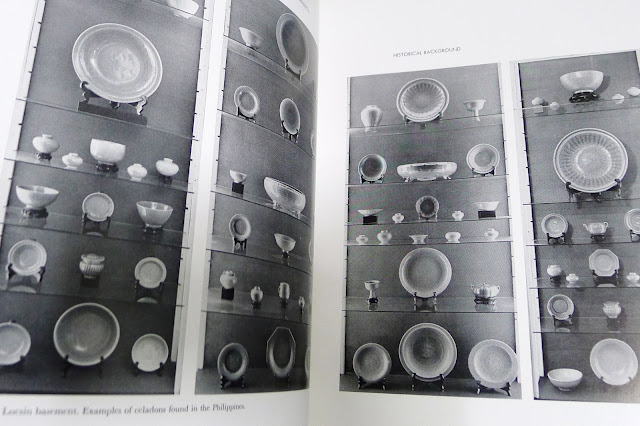If there’s a book that every Filipino ceramic collector should have in his/her library, this is the one. This is one of the earliest and most cited work when it comes to ceramics and Philippine terrestrial archaeology.
Written during the plentiful year of the 60s by famed
artist-archaeologist Leandro Locsin, Oriental Ceramics traces the origins of
the trade, the history and the variety that they unearthed in Sta. Ana and
Calatagan. Aided by Robert Fox and the
National Museum, Locsin has managed to systematically study and catalog early
trade ceramics in a way that gives us a clear glimpse of the richness of precolonial Philippine
society.
Presently, there has not been a book of this magnitude and scale ever published. Even the famed author on Asian ceramics, Roxanna Brown, acknowledged in her book The Ming Gap and Shipwreck Ceramics in Southeast Asia (The Siam Society, 2009) that the Sta. Ana and Calatagan finds were important because they constitute large burial finds that do not have a single Chinese blue&white ceramic.
Published by Tuttle in Japan in 1967, Oriental Ceramics has the marks of being a collector's book. Hardbound in a blue buckram cover with gilded lettering, the volume is worth the $22.50 retail price. The paper used was heavy glossy paper similar to those mid-century US encylopedias we have in the house. There are 228 plates and 89 in full color. Color printing back then must have commanded a premium price. The photos are crisp and well lighted. For collectors, the pieces featured inside are great reference to cross-check any collection. Mostly, the pieces are Thai, Vietnamese or southern Chinese. If you're looking for Ming, you might want to check another book.
Famed historian Ambeth Ocampo collected and sold this volume. He recounted in the September 2006 newsletter of the Oriental Ceramic Society of the Philippines:
" I was so disinterested in ceramics that I sold two copies of the rare book, Oriental Ceramics Discovered in the Philippines by Leandro and Cecila Locsin. When I got hold of a third and fourth copy in 1999 and actually leafed through them, I realized very late that any study of Philippine pre-history inevitably touched on ceramics. These were so important that the pioneering pre-historian H. Otley Beyer even wrote an article on ‘The Philippines in the Porcelain Age’ (roughly the 9th to the 16th centuries). ... The more I read, the more interested I became and when I went into antique shops, I would give ceramics a second look and realize that they were objets d’art and not just traces of our history."
This is why if you are absolutely serious about collecting antique ceramics in the Philippines, then try to procure this book.
Published by Tuttle in Japan in 1967, Oriental Ceramics has the marks of being a collector's book. Hardbound in a blue buckram cover with gilded lettering, the volume is worth the $22.50 retail price. The paper used was heavy glossy paper similar to those mid-century US encylopedias we have in the house. There are 228 plates and 89 in full color. Color printing back then must have commanded a premium price. The photos are crisp and well lighted. For collectors, the pieces featured inside are great reference to cross-check any collection. Mostly, the pieces are Thai, Vietnamese or southern Chinese. If you're looking for Ming, you might want to check another book.
Famed historian Ambeth Ocampo collected and sold this volume. He recounted in the September 2006 newsletter of the Oriental Ceramic Society of the Philippines:
" I was so disinterested in ceramics that I sold two copies of the rare book, Oriental Ceramics Discovered in the Philippines by Leandro and Cecila Locsin. When I got hold of a third and fourth copy in 1999 and actually leafed through them, I realized very late that any study of Philippine pre-history inevitably touched on ceramics. These were so important that the pioneering pre-historian H. Otley Beyer even wrote an article on ‘The Philippines in the Porcelain Age’ (roughly the 9th to the 16th centuries). ... The more I read, the more interested I became and when I went into antique shops, I would give ceramics a second look and realize that they were objets d’art and not just traces of our history."
This is why if you are absolutely serious about collecting antique ceramics in the Philippines, then try to procure this book.




No comments:
Post a Comment